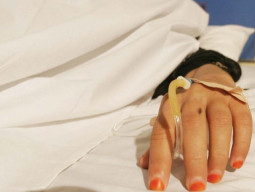
LAHORE:
Thirty-four laboratories have been set up in the Punjab to monitor salt iodisation, said Dr Khawaja Masuood Ahmed, the national programme manager for Iodine Deficiency Disorder (IDD) and Universal Salt Iodisation (USI), on Monday.
Addressing a training session for lab technicians organised by the Health Department and the Micronutrient Initiative at the District Health Development Centre (DHDC), Dr Ahmed said that quality control was an important component of IDD/USI programme.
He said that salt samples analysed at these labs would provide valuable feedback for salt processors and district monitors so they could take measures to improve the quality of salt iodisation. He said that three reference labs had been set up in the province to monitor the quality of the district labs.
Munawar Hussain, the Punjab programme manager for the Micronutrient Initiative, said that Iodine deficiency was a major public health problem in Pakistan, despite progress in the form of universal salt iodisation. He said that according to the National Nutrition Survey 2011, the use of iodised salt in the Punjab had increased from 17 per cent in 2001 to 79 per cent.
Dr Ziauddin, the DHDC programme director, said that daily use of iodised salt could prevent mental and physical retardation, cretinism, still births and brain damage. “It helps our children live healthy and productive lives,” he said.
Training facilitators Tariq Aziz, Muhammad Yasin, Saima Fuad and Muhammad Shahid discussed various methods to quantify iodine in salt.
The training was followed by a practical demonstration at the City District Food Lab. At the end, training certificates were distributed to the participants.
Published in The Express Tribune, October 9th, 2012.






































COMMENTS
Comments are moderated and generally will be posted if they are on-topic and not abusive.
For more information, please see our Comments FAQ